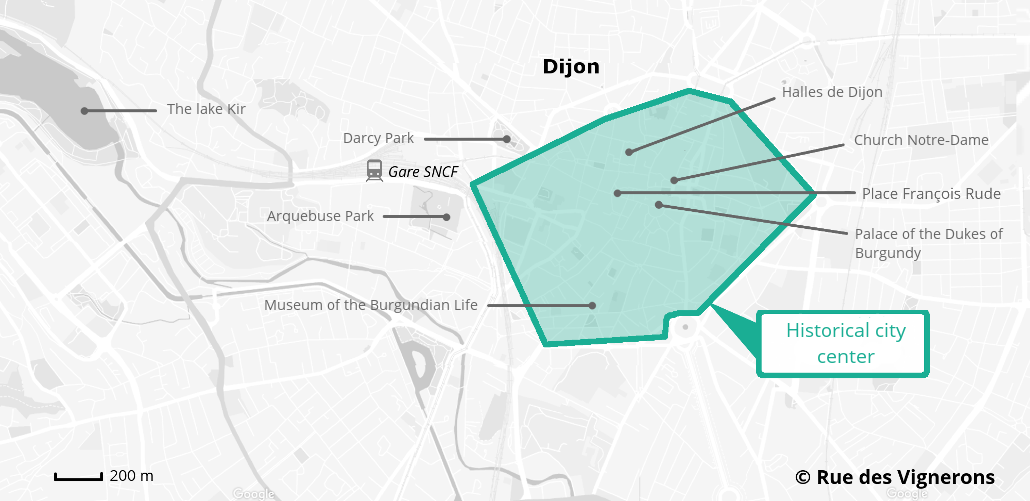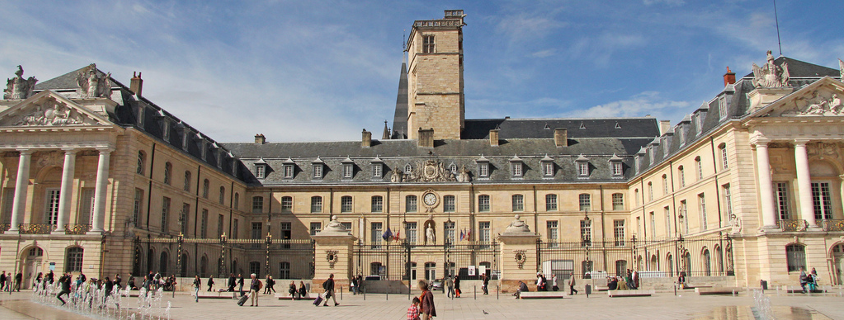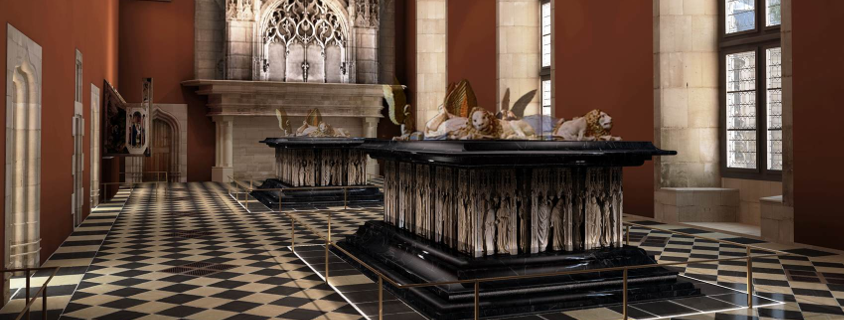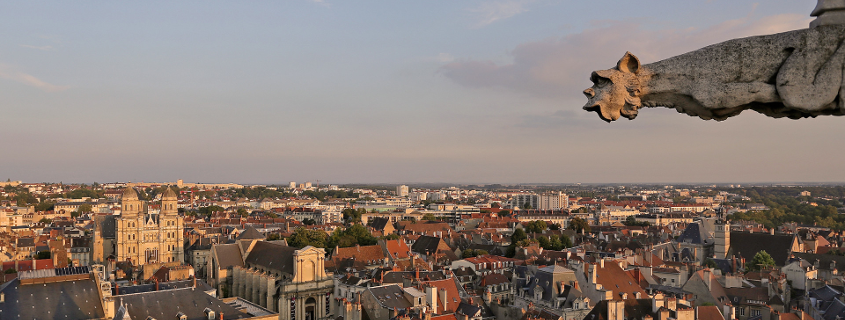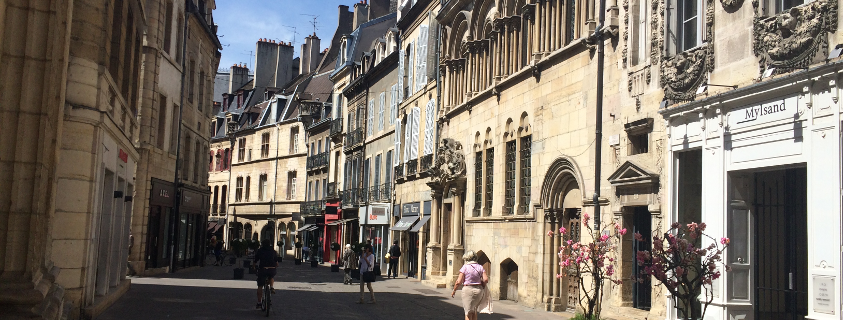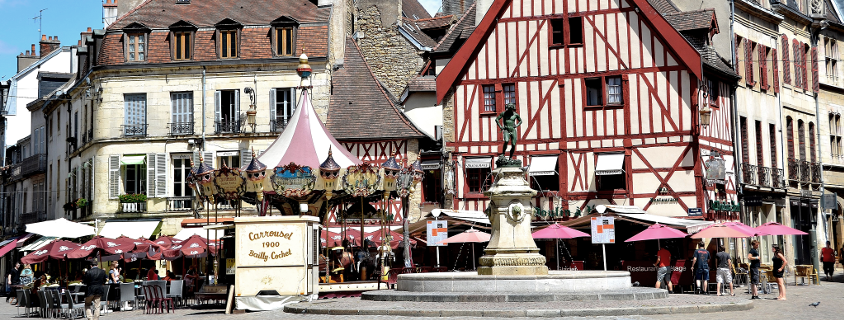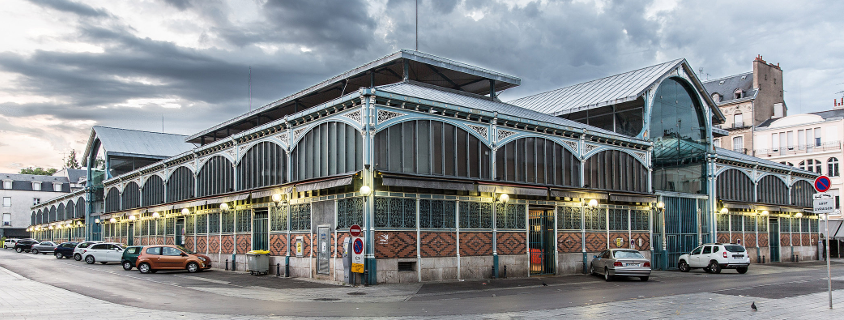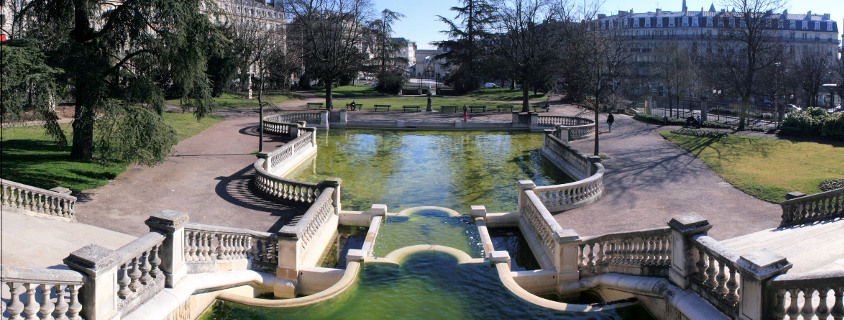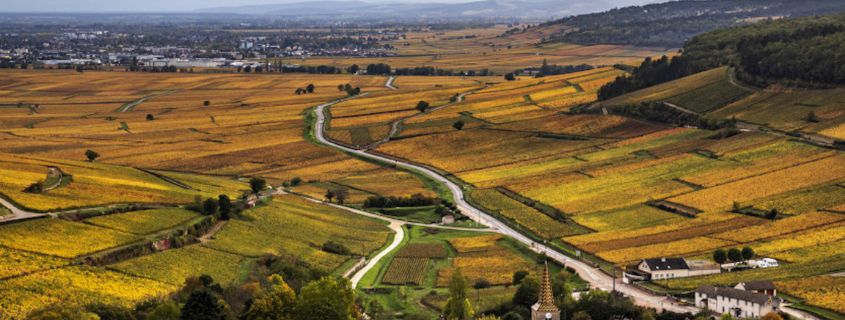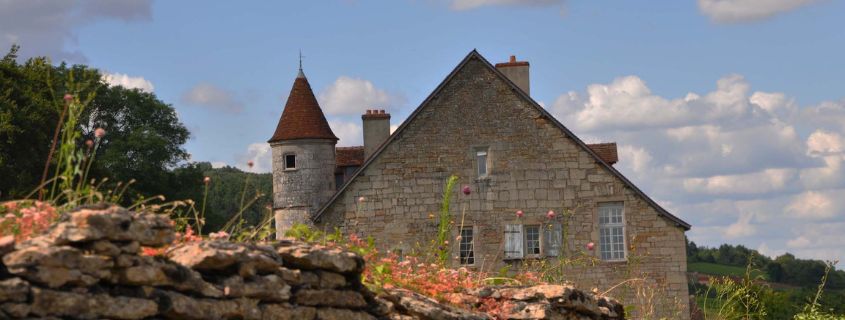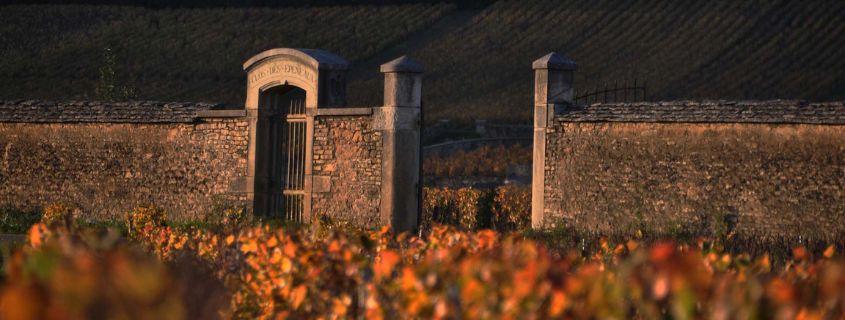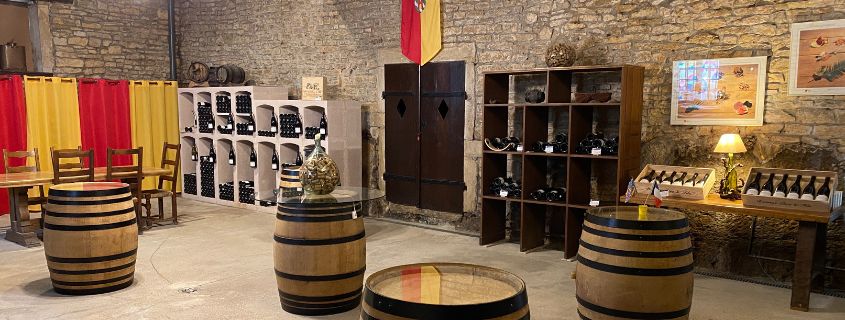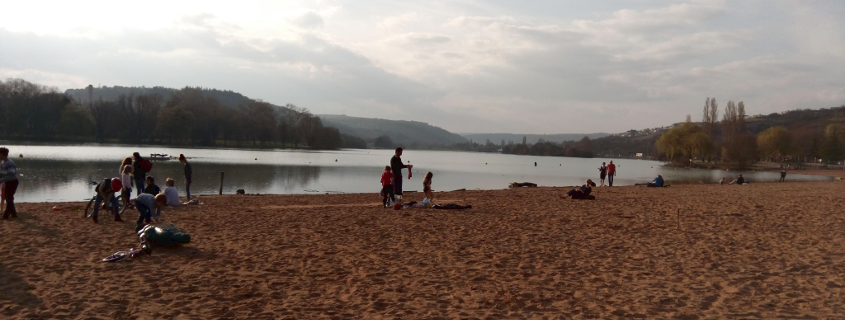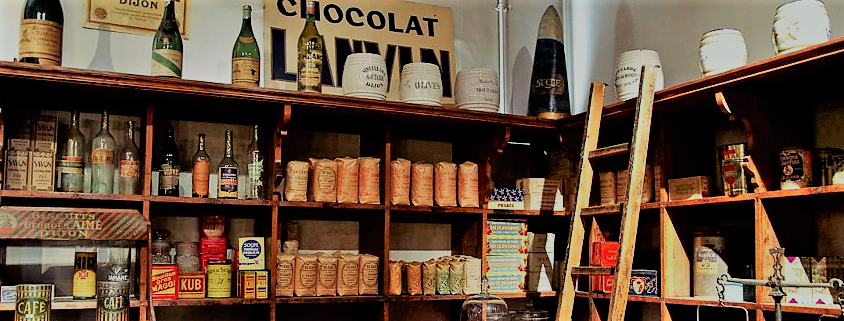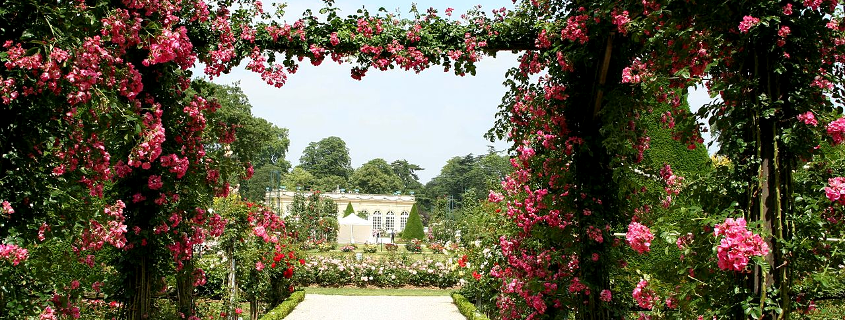What to visit in Dijon and its region ?
Rue de la liberté © quelles-dates.fr
Dijon is a city of the eastern part of France, in the wine region of Burgundy. It is located in the Côte-Or administrative department and the Bourgogne Franche Comté administrative region. This city used to be the capital of the Dukes of Burgundy and has today an important historical heritage with lovely places to visit such as the famous Palace of the Dukes (Ducal Palace) and its museum of arts (musée des Beaux-Arts). Dijon is a place known worldwide for its fine gastronomy and wine (the city is a few miles away from the Burgundy vineyard). Moreover, you must have a walk in the city historic center as Dijon is listed as a UNESCO world heritage site. You will be seduced by its many pedestrian streets that you can follow with the parcours de la chouette, its romanesque and gothic churches and also its traditional half-timbered houses.
If you are wondering if you should visit Dijon or if Dijon is worth visiting, you will find below the top things to do and places to visit in Dijon and its region.
Directly access to the topic of your choice : Palace of the Dukes of Burgundy, Historical city center, Local vineyards, Around Dijon.
The Palace of the Dukes of Burgundy
The palace of the Dukes of Burgundy (also called Ducal Palace) is today the most famous monument of Dijon. At the beginning, it was a simple fortress, and was then rebuilt in 1366 by the first Duke of Valois, Philippe le Hardi. Rebuilt in the 15th century under Philippe le Bon, the tower of the terrace (Philippe le Bon Tower) was built at the same time as the main building. The layout of the palace was made from the royal square (now called Place de la Liberation) by Jules Hardouin-Mansart, architect of the king. The palace had different functions over time: home of the dukes of Burgundy, drawing school, or head office of the governor of the representative assembly under the Old Regime.
The city hall, a museum of arts (Musée des Beaux Arts), the city archives and the tourist office of Dijon are now housed in the palace. To go to the palace, you will probably cross the “Place de la Libération” which is one of the most famous square of Dijon lying in front of the palace. Formerly called “royal square”, this square is the symbol of the king’s power through its hemicycle shape.
Palace of the dukes of Burgundy © Flickr.com
The museum of fine arts (Musée des Beaux Arts) of Dijon is one of the most important museums of France because of the cultural richness of its collections. You will find there the tombs of the Dukes of Burgundy, but also several collections from Antiquity to contemporary art, with many tapestries, sculptures and other paintings.
Fine arts museum of Dijon © tracesecritesnews.fr
View of the city at the Philippe le Bon tower © patrimoine.dijon.fr
Historical city center of Dijon
Listed as a UNESCO World Heritage Site, downtown Dijon is a lively place, mixing culture and pleasure. The pedestrianisation of the streets will allow you to easily visit Dijon in one day and discover its many bars, traditional Burgundy restaurants, and cultural places (museums, churches …), of the so-called “City of a hundred Bell towers”.
Historical city center of Dijon © lemagdelimmo.com
In the very heart of Dijon, you can follow a trail indicated by 22 owls on the cobblestones of pedestrian streets, to discover top places and points of interest of the city. Among these main places, you will find the Cathedral Saint Bénigne but also the church Notre Dame which is registered as historical monuments and where you will have a look at its 51 gargoyles and splendid stained-glass windows. Lying on one side of the church, the owl is an emblematic symbol of Dijon. It will certainly give you good fortune if you touch it with your left hand ! You will certainly also have the opportunity to walk by the famous house with 3 gables (“Maison aux 3 pignons”).
The owl of the church Notre-Dame de Dijon © burgondiart.wordpress.com
The Place François Rude (commonly called “Bareuzai”, a local word referring to the sector of the wine) is the most touristic square in the city. With its architecture mixing Middle Age and Renaissance, this square also has a beautiful fountain and a carrousel with reproductions of Gustave Eiffel. Located close to the rue de la Liberté, this square is surrounded by littles shops and bars.
Place François Rude © flickr.com
Built in 1868, les Halles de Dijon is made of 4 buildings with a total surface of 4400 square meters and 246 shops. With an architecture relatively similar to the one of the former Halles of Paris, they are now listed as historical monuments. It is a meeting place where food lovers and good living people like sharing their passion.
Les Halles de Dijon © Pinterest.fr
The garden Darcy (“jardin Darcy”) is a small wooded park with a scallop-shaped fountain, ideal for a moment of rest after a shopping day along the street of Liberty (“rue de la Liberté”). This park is adjacent to the Haussmann-style Darcy square where the former ramparts were built. There, you will also find a triumphal arch, called “Porte Guillaume”, which delimits the historical district of Dijon.
Porte Guillaume © Pinterest.fr
Burgundy vineyards near Dijon
The city of Dijon is the gateway to the Burgundy Route des Grands Crus (wine road), which crosses many prestigious wine appellations in the vineyards of Côte de Nuit and Côte de Beaune and famous villages such as Beaune, Pommard, Nuits Saint Georges …
The closest wineries are just 10 minutes away from Dijon by car. Take the opportunity to discover the famous Pinot Noir and Chardonnay of Burgundy …
Through a wine tour
If you want to discover Dijon and its surroundings, you can’t miss the opportunity to have a wine tour from Dijon. You don’t have a car or can’t drive? Be carefree: you won’t have to worry about the road with a guided tour. You’ll be able to discover the beauty of the vineyard and to taste the famous appellations of the region, with a guide and driver. Here are few options depending on what you’re exactly looking for.
Burgundy vineyard © Chemin de Bourgogne
Burgundy Full Day Wine Tour: perfect if you want to have a complete visit with a small-group, and enjoy two or three tastings, particularly of 1er cru and Grand cru wines and discover the Côte de Beaune and Côte de Nuits, with nothing to worry about.
Burgundy Cellar © Authentica
Afternoon Côte de Nuits Wine Tour: if you would rather have a shorter private visit, just for you and your close ones, try an afternoon tour ! You’ll be discovering the most prestigious appellation around Dijon aka The Côte de Nuits.
Burgundy Château © Authentica
Premiers Crus and Grands Crus full day Wine Tour: with this private tour you’ll discover the most prestigious wines by having 3 tastings of 15 to 20 wines, including many Côte de Nuits appellations such as Vosne-Romanée, Gevrey-Chambertin, Nuits-Saint-Georges, Chambolle-Musigny and Morey-Saint-Denis. You’ll enjoy learning about the process of vinification with a stroll through the vineyards and explanations of the mythical parcels classified as Grands Crus.
Clos des Epenaux © Authentica
Through a simple visit
At 20 minutes from Dijon by car, you will find Le Clos de la Perrière located at the top of the village of Fixin. The domaine Joliet winery is an historical property of Burgundy as it was created in the 12th century by the monks of Citeaux. Bénigne Joliet, current owner of the winery, will make you an amazing tour and tasting. You will discover its typical historical cellars where is stored a former wine press from Middle Age. Warm, welcoming and passionate, Bénigne will be keen to make you taste his wines, including a Premier Cru monopoly ranked among the greatest wines of Burgundy.
Joliet winery, Fixin
In the heart of the Gevrey Chambertin village, 12 kilometers away from Dijon, the domaine Quivy is lying in a 18th century former town house listed as historical monument. You will be able to visit its underground vaulted cellars where the wines are being aged, and also enjoy a commented tasting of several red wines of Burgundy. A wide range of wines of Burgundy (from regional appellation to premier and grand crus) are available there.
Domaine Quivy winery, Gevrey-Chambertin
The Boursot Père et Fils winery is a 4 hectares family-owned winery with a rich history which began in 1550 with Guillaume Boursot, who was already a winegrower in Chambolle-Musigny. He has then generated a lineage of wine growers, from father to son. Today, Romaric and Romuald, representatives of the 15th generation of the lineage, run the Maison Boursot Père et Fils, founded in 1993. Since then, their grapes are vinified with respect for the terroir and traditions.
Boursot Père et Fils, Chambolle-Musigny
Around Dijon
At the gates of Dijon, you can relax on the shore of Lac Kir, a 37 hectares artificial lake surrounded by a large green area. Many water sports and activities are available : canoe, pedal boats, beach volleyball, tennis, mini golf, children playgroun … The swimming is allowed during summer time.
The lake Kir in Dijon ©justeacote.com
The Museum of Burgundian Life is housed in the cloister of the Bernadines Monastery. This ethnological Burgundy museum will immerse you in the culture and history of the region with the costumes, furniture, traditional equipment of the 19th century. You will also find there on the first floor a reproduction of eleven historical local shops (Pharmacy, grocery, butcher shop …).
Reproduction of a former grocery store, Musée de la Vie Bourguignonne © Tripadvisor.fr
The Arquebuse Park is a garden where you will find the Natural History Museum, a botanical garden and a planetarium. This is a unique concept in Europe that allows you to discover biodiversity.
Arquebuse garden © commons.wikimedia.org
We wish you a nice discovery of Dijon and its region !


